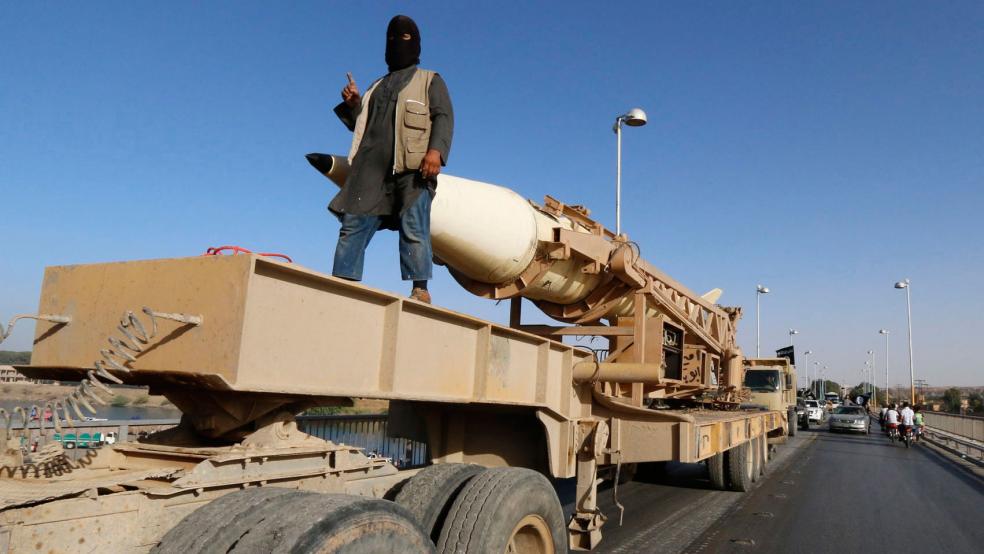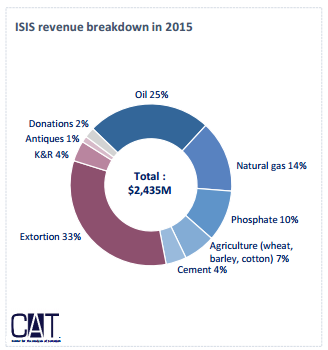Despite territorial losses last year and declining oil revenues, ISIS remains financially strong, primarily because it has borrowed a page from the Mafia and stepped up one of its money-makers: extortion.
A new report on ISIS finances from a European think tank, the Center for the Analysis of Terrorism (CAT), says extortion is now the primary revenue generator for what it calls “one of the most powerful groups in the recent history of terrorism,” with some 8 million people under its control in Syria and Iraq.
Related: ISIS Terrorists Get a Big Pay Cut
“ISIS exerts its authority over a wide range of industrial and commercial activities, natural resources and raw materials, from oil to agricultural products, including minerals,” the report says. “While the exploitation of these natural reserves constitutes one of its primary sources of financing, the majority of its funds currently comes from widespread extortion from the population under its control, mainly in the form of taxes, confiscations and fees.”
CAT says that the radical Islamic terror group uses these resources to finance its military efforts and fund its expansion, especially into Libya, while remaining self-sufficient.
Like the mob groups Camorra and ‘Ndarangheta in Italy and drug cartels in Mexico, ISIS relies on a diversified set of criminal activities, but extortion has become all-important to its survival.
What ISIS calls taxes and fees go beyond normal government levies. In addition to a tax on all economic activity and revenues and zakat, a tax on income and wealth observant Muslims must pay, ISIS raises funds with other levies. They include: a tax of from 10 percent to 50 percent on the salaries of Syrian or Iraqi government employees living in areas controlled by the Islamic State; a tax for protecting religious minorities; multiples taxes on agricultural products at various points in the value chain; custom duties on trucks crossing into ISIS-controlled territory; and fees for water, electricity and phones. Homes of dignitaries and people fleeing are confiscated and looted, the report says.[CS1]
ISIS also uses its strict interpretation of sharia law to squeeze the populace it controls through fines and penalties for “transgressions,” according to CAT.[CS2]
CAT estimates that ISIS oil revenue for 2015 was about $600 million, compared with more than $1 billion in 2014. It attributed the drop to air strikes by coalition and Russian forces on refining, storage and transport facilities.
To compensate for that loss, ISIS has stepped up extortion, earning about $800 million in 2015, compared to $360 million in 2014, the CAT report says.
Related: The Cost of the War Against ISIS: $7 Billion and Counting
Including money made from other criminal behavior such as kidnapping and ransoms and trafficking in antiquities and humans, CAT estimates that the total revenues of the Islamic State dropped from $2.9 billion in 2014 to $2.4 billion in 2015. Despite setbacks, it said the economic collapse of ISIS is far off and its military defeat is not “imminent.”






